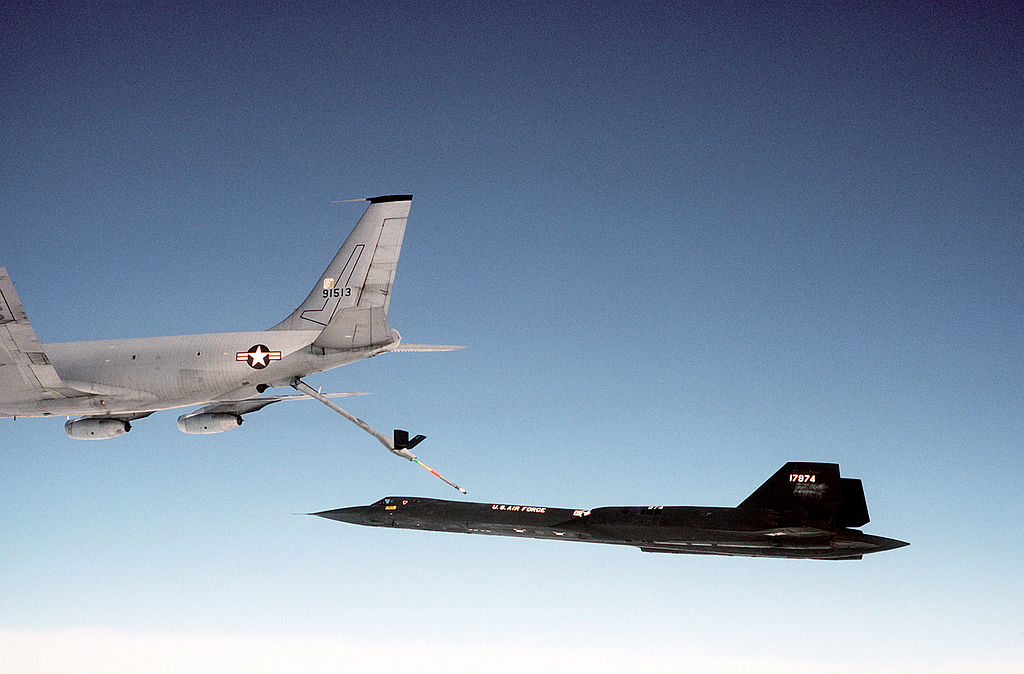The SR-71 Blackbird
The US Air Force (USAF) created the SR-71 Blackbird in the 1960s. It was a plane that could move at a speed that was more than three times the sound made by its own engines.
The SR-71 spy plane held the record for being the fastest and highest-flying operational aircraft in the world for about 24 years. At a speed of Mach 3+, it could cover 100,000 square miles of Earth’s surface per hour while flying at 80,000 feet. Additionally, the Blackbird only needed to accelerate and outrun any missiles in the unlikely event that an enemy attempted to shoot it down.
The SR-71’s engineering was so advanced that new tools had to be created in order to build it.
What it’s like to fly the world’s fastest plane
Spencer Hall spoke with former SR-71 Blackbird pilot Rick McCrary for SBNation to find out what it’s like to pilot the fastest plane in the world.
McCrary explained;
‘You waddle out there in your spacesuit, carrying your little cooler, because it gets quite hot in that spacesuit. You go out to a van with some La-Z-Boys in it, these big recliners, and they drive you out to the airplane. It’s sitting there with all the cables hooked up to it, just like a space launch. It’s outgassing stuff, people are checking it, and then people start unhooking it and leaving and then it’s just you and the crew chief. You get into the seat, close the hatch, and you’re in your cocoon.
‘Startup was also a unique thing. It had this special fuel, because the temperatures during flight got up to over 600 degrees Fahrenheit when you’re at speed. The worry is that with normal fuel, which you want to explode quickly during flight and have a low flashpoint, well… you wanted the exact opposite with the Blackbird. You’re carrying so much fuel that the last thing you want to worry about is self-igniting.

‘You’d burn 80,000 pounds of fuel in about an hour and twenty minutes. That’s a lot of gas. You’re on the boom a lot, and that was why in-flight refueling experience was such a critical part of the screening process. You didn’t have a lot of time to do it, and you had to get it right the first time. Three refuelings were common, but on longer missions, you’d refuel six or eight times. Those were long days.
Last flight on the SR-71 Blackbird
‘You’d light up the afterburner right after that first refueling, and take it to full power for the next hour. That’s pretty amazing, because no other plane can fly in full afterburner continuously. All other planes have either a three-minute limit, or five minute limit on that, but you’d be going at full afterburner for an hour, hour and a half.’
When Hall asked McCrary if he remembered when his last SR-71 Blackbird flight took place, he answered;
‘The answer is kind of an interesting yes and no. There came the time to move on, and we had a good deal. We got to take it to the National Air Show in Washington, DC, and put it on display there. That was going to be our last flight.
Setting 13 acres of Maryland on fire during last flight on the SR-71 Blackbird
‘As we took off from there and came back around for a pass, the right engine exploded. We had to dump gas and set about thirteen acres of Maryland on fire as we did that. That was kind of interesting, just spewing flaming fuel and titanium pieces around.’
McCrary explained that this wasn’t rural Maryland;
‘Actually, we were pointed at the White House out of Andrews Air Force Base. It was funny listening back to the voice tape because I start by saying “Well, we’ll go out over the bay here and dump this fuel.” About thirty seconds later, I say “Screw it” and just dump it. We defoliated southern Maryland, but we got it back on the ground, which was great. After all that happened, I absolutely remember shutting it down. My legs started shaking uncontrollably with the adrenaline from it all when I knew it was over with. My co-pilot never flew again, either.’
Check out Habubrats SR-71’s Twitter profile and Born into the Wilde Blue Yonder’s Facebook page for further Blackbird photos and stories.
Photo by Lockheed Martin and U.S. Air Force

